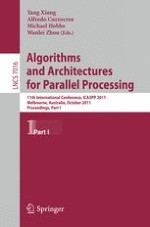This two volume set LNCS 7016 and LNCS 7017 constitutes the refereed proceedings of the 11th International Conference on Algorithms and Architectures for Parallel Processing, ICA3PP 2011, held in Melbourne, Australia, in October 2011. The first volume presents 24 revised regular papers and 17 revised short papers together with the abstract of the keynote lecture - all carefully reviewed and selected from 85 initial submissions. The papers cover the many dimensions of parallel algorithms and architectures, encompassing fundamental theoretical approaches, practical experimental results, and commercial components and systems and focus on two broad areas of parallel and distributed computing, i.e., architectures, algorithms and networks, and systems and applications.
